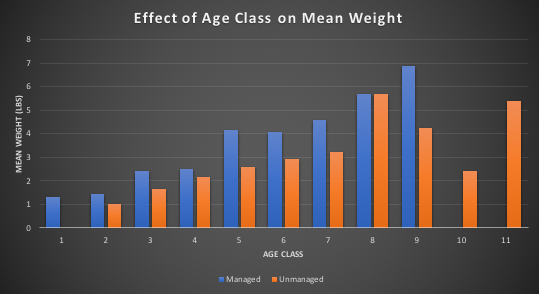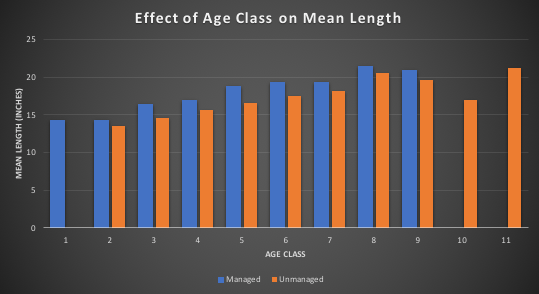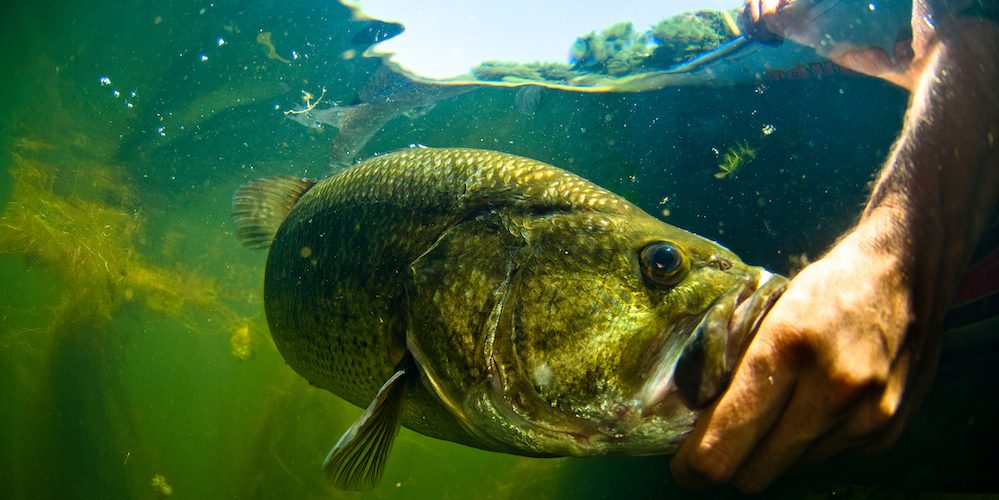Data collected in electrofishing surveys conducted in the summer of 2020 suggests that even a small amount of management can positively impact your fishery's production and condition.
Electrofishing Data from Managed and Unmanaged Bodies of Water
We conduct electrofishing surveys on a wide array of lakes and ponds throughout Texas, Oklahoma, and even Arkansas throughout the year. Pond King managed some of these lakes; some were closely managed by their owners, and others were being surveyed for the first time to help establish a management plan. We typically collect scales from a subsample of Largemouth Bass (Micropterus salmoides), or whatever the primary predator might be in the lake during these surveys. In a previous blog, Determining the Age of Fish, I explained why we collect scales and how we use them to determine the age of fish, but the biologists at Pond King have never put all our scale data together ... until now. I compiled all the scales we collected from March 2020 through October 2020 to draw comparisons and answer a question that many people might have about management: Does lake/pond management really affect fish growth? By comparing the weight to age relationships of our sample, we can estimate average yearly growth and compare these between "Managed" and "Unmanaged" lakes. While we manage to increase fish plumpness (girth/weight per length) instead of fish length, we can also make length-to-age comparisons as there is a strong correlation between fish's total length and their weight potential.
Managed versus Unmanaged
To make this comparison, I determined the criteria of a "Managed" lake versus an "Unmanaged" lake:
- In the "Managed" category, I included lakes that Pond King maintains or manages and lakes where the owners closely manage or monitor the ecosystem (habitat maintenance, supplemental feeding, or stocking). Some of these lakes have just recently come under management, and others have been managed for a few years. The duration of management does add some variability to the data on growth rates.
- In the "Unmanaged" category I included lakes that had not been previously monitored or evaluated until the time of our survey when we collected the scales for analysis.
From March until October, we collected scales from a total of 110 individual largemouth bass. Of these fish, 43 samples (39%) were taken from currently "Managed" fisheries, while 67 samples (61%) were taken from fisheries that were "Unmanaged" prior to the survey.
Interpreting the Electrofishing Data
The mean average growth per year (Weight) of all our surveys (managed and unmanaged combined) was approximately 0.60 pounds per year and average growth per year (Length) was approx. 3.93 inches per year. Within the subsample of Unmanaged lakes, the average growth per year (Weight) was 0.52 pounds per year and the average growth per year (Length) was 3.60 inches per year. The subsample of Managed lakes exhibited an average growth per year (Weight) of 0.73 pounds and an average growth per year (Length) of 4.45 inches. As you can see, there is already an observable difference between the averages of growth per year (Weight) and (Length). We expected a difference in growth between the two subsamples, so a t-Test was completed on both growth per year (Weight) and growth per year (Length) to determine the significance of rejecting the null hypothesis.
When testing for significance, you must first determine the null hypothesis (H0). This hypothesis is there will be no significant difference between Managed and Unmanaged Lakes. It is written as such:
H0 = If Growth Rate (Weight) in Managed versus Unmanaged Lakes Are Compared, Then There Will Not Be A Significant Difference In Growth Rate (Weight).
H0 = If Growth Rate (Length) in Managed versus Unmanaged Lakes Are Compared, Then There Will Not Be A Significant Difference In Growth Rate (Length).
These null hypotheses, in our case, are what we hope to reject in favor of accepting our Alternative Hypothesis (H1):
H1 = If Growth Rate (Weight) in Managed versus Unmanaged Lakes Are Compared, Then There Will Be A Significant Difference In Growth Rate (Weight).
H1 = If Growth Rate (Length) in Managed versus Unmanaged Lakes Are Compared, Then There Will Be A Significant Difference In Growth Rate (Length).
Results from both Two-Sample Assuming Unequal Variances for Growth per year (weight) and growth per year (Length) were as follows:
Growth per year (Weight)
Managed lakes (M = 0.73, SD = 0.28) indicated an significant increase in average Growth per year (Weight) when compared against Unmanaged Lakes (M = 0.51, SD = 0.26);
t(84) = 1.67E-10, p < .05.

Growth per year (Length)
Managed lakes (M = 4.45, SD = 2.12) indicated an significant increase in average Growth per year (Length) when compared against Unmanaged Lakes (M = 3.60, SD = 1.06);
t(56) = 4.55E-12, p < .05.

The Impact of Pond Management on Bass Populations
With these results, we can reject the null hypothesis for both Growth Rate (Weight) and Growth Rate (Length) as p values were less than our 95% confidence interval of 𝛼 = .05. In turn, we can accept the alternative hypotheses as there are significant differences in growth rates (Weight and Length) between Managed and Unmanaged lakes. This means that with 95% confidence, we can predict that a largemouth bass from a Managed lake will exhibit growth rates superior to that of a largemouth from an Unmanaged lake. The key takeaway from these findings is that even a small amount of management can positively impact your fishery's production and condition. You can implement these management practices yourself or through a professional management company such as Pond King Inc.
As we continue to add more data, we can make more in-depth comparisons to refine management strategies to benefit your specific ecosystem even more. If you have any questions or suggestions for future comparisons, feel free to email me at ethan@pondking.com, and I will get back to you as soon as possible.
See y'all down at the pond!



